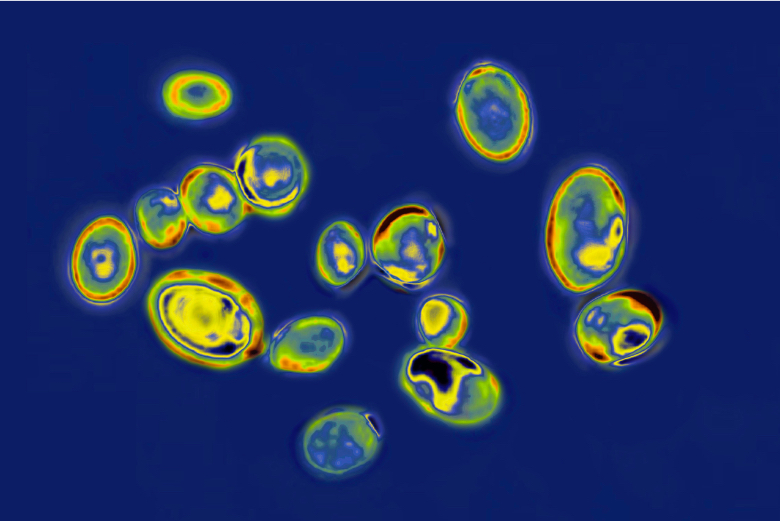In the wake of the recent Covid-19 pandemic, an increasing number of authoritative voices are warning of the potential danger of a fungal species becoming the next plague to threaten humanity. This alarm is based on an accumulation of factors, led by global warming.
Before getting into the subject, it is worth recalling the opening question: the last pandemic that struck humanity and raised the alarm about similar threats in the future is still very recent. According to WHO estimates, Covid-19 caused between 1.8 and three million deaths in 2020. And in the same time period, the Global Action for Fungal Infections (GAFFI) puts the number of deaths from fungal infections at two million. So one wonders if fungi are not already a pandemic. Despite these figures, it is only now that experts are beginning to warn of the potential epidemic threat posed by fungi. Why only now?
The perfect storm
Since humans first appeared—and even earlier, when we were not yet hominids—we have coexisted with fungi without them posing a threat to our survival. This is because most fungal species cannot grow and reproduce successfully at temperatures above 30°C, and therefore cannot survive. And the human body, as a warm-blooded organism, has an internal temperature of 37°C. Fungi prefer cooler environments, and since these are abundant on the planet, they have not felt the need to evolve and adapt to different conditions… until now. Today, a perfect storm of factors is brewing for this to change.

The main factor is the progressive and vertiginous warming of the planet, the consequent loss of cool environments, and the increasing pressure that this represents for fungi. A principle that applies in nature is that the greater the threat to an organism’s survival, the greater the stress it is under and the greater the number and speed of genetic mutations that occur in order for the species to adapt and survive.
According to a study carried out by researchers at Duke University, the key to this natural selection process lies in transposons, “jumping” fragments of DNAs that can change position within the genome of a single cell. These insertions cause changes in genes and in their expression and regulation. According to the aforementioned study, in the case of fungi, high heat stress increases the number of these jumps, thus accelerating the evolutionary process with the aim of producing mutants that can thrive at higher temperatures. And this is exactly the current scenario. As the experts explain, every day of excessive heat is a natural selection event for fungi. Many perish, but those that possess some mutation that makes them more tolerant to the new conditions survive, giving rise to a new generation of better adapted fungi. And more and more high temperature days are driving this accelerated evolution.

Not only that, but this process produces mutants that can more easily breach our defences and are also more resistant to antifungal drugs. To make matters worse, our arsenal of approved drugs is rather meagre, and the drugs themselves are not very effective. There are several reasons for this: firstly, fungi are eukaryotic organisms, so their cells are less vulnerable; secondly, more selective compounds are needed that are not toxic to our own (also eukaryotic) cells; and finally, and most importantly, mankind has not yet felt the need to “get serious” about developing these drugs.
The dangers of longevity
Another factor contributing to this perfect storm is that we are living longer; we have treatments and methods to prolong our lives. But paradoxically, this is opening the door to more fungal infections. Until now, they have been concentrated in people with compromised immune systems; the main niche has been patients in hospitals, health centres and nursing homes. So medical advances and our ever-increasing “artificial” longevity are increasing the number of possible targets for fungi.

And there are other secondary factors: the difficulty in detecting these infections in time; the increasing globalisation of society, which means that people, animals and exotic plants circulate all over the planet, facilitating contact with species unknown to our organism and against which we have no adequate defence mechanisms; and even the postulated decrease in our body temperature as a response to global warming.
In short, it seems that the experts are right and there are reasons to be concerned, to say the least. And all this with the apocalyptic plot of the hit fictional series The Last of Us as a backdrop…
From theory to practice: the paradigmatic case of Candida auris
The pathogenic and potentially deadly fungus Candida auris was first identified in Japan in 2009 as the culprit behind an ear infection. In 2013, the first infections were detected in the USA. Since then, the number of infected people in that country has increased every year, from 53 cases diagnosed in 2016 to 756 in 2020 and 1,471 in 2021. And not only in the USA: between 2012 and 2015, different mutations of the fungus capable of infecting the human body have emerged independently in Africa, Asia and America in response to heat stress. Worse still, the new variants exhibit increasing resistance to existing treatments.

Comments on this publication